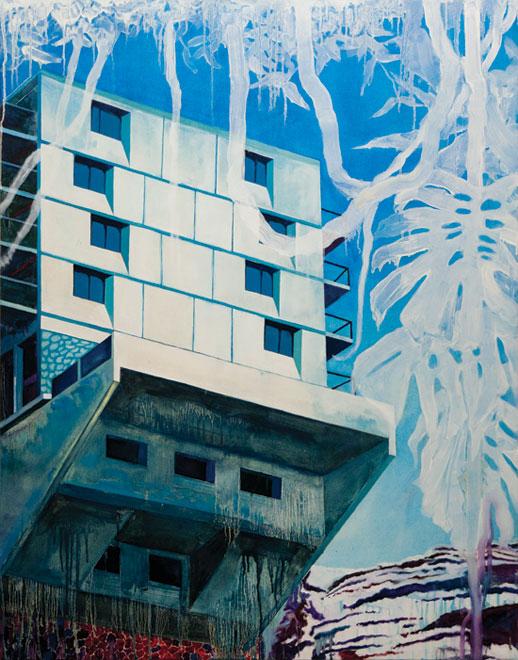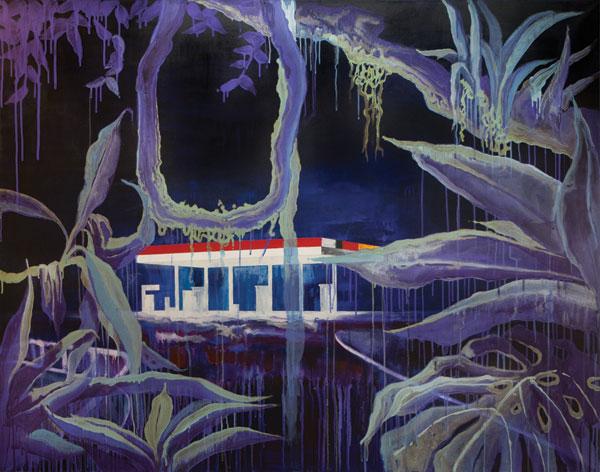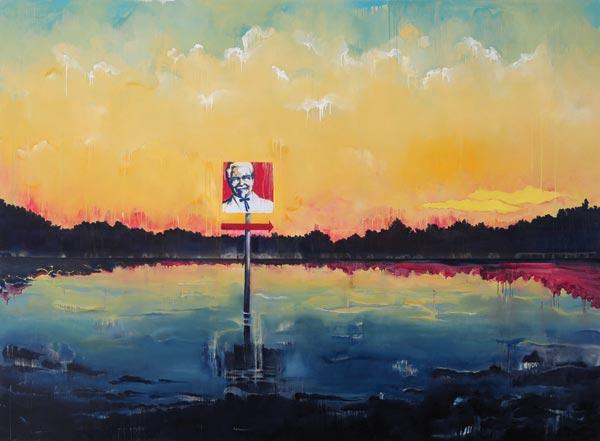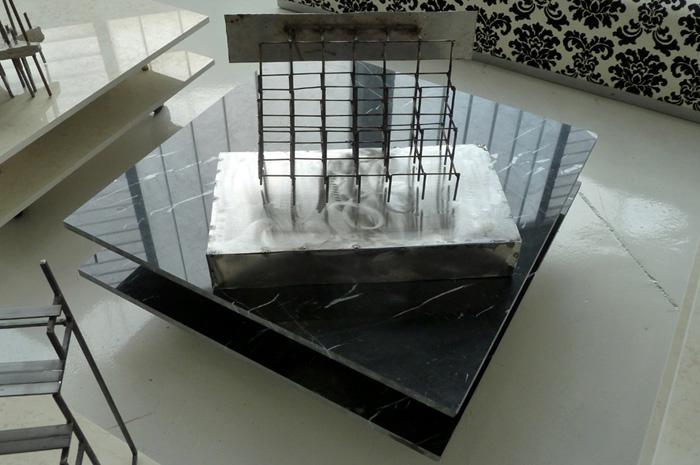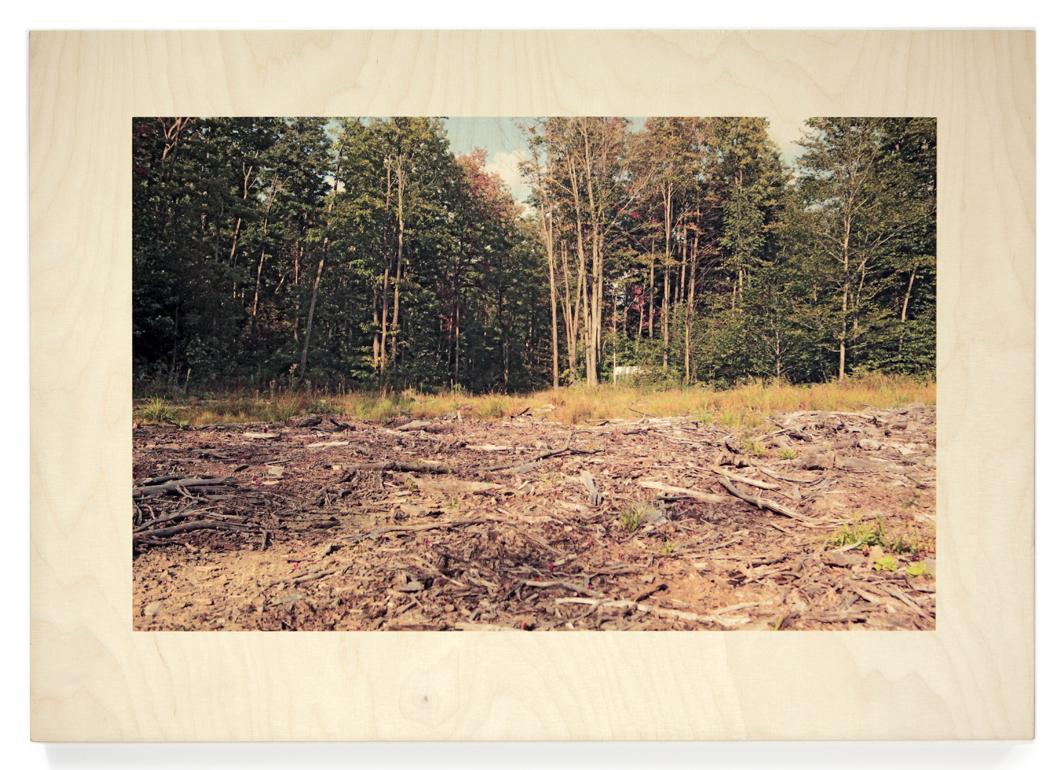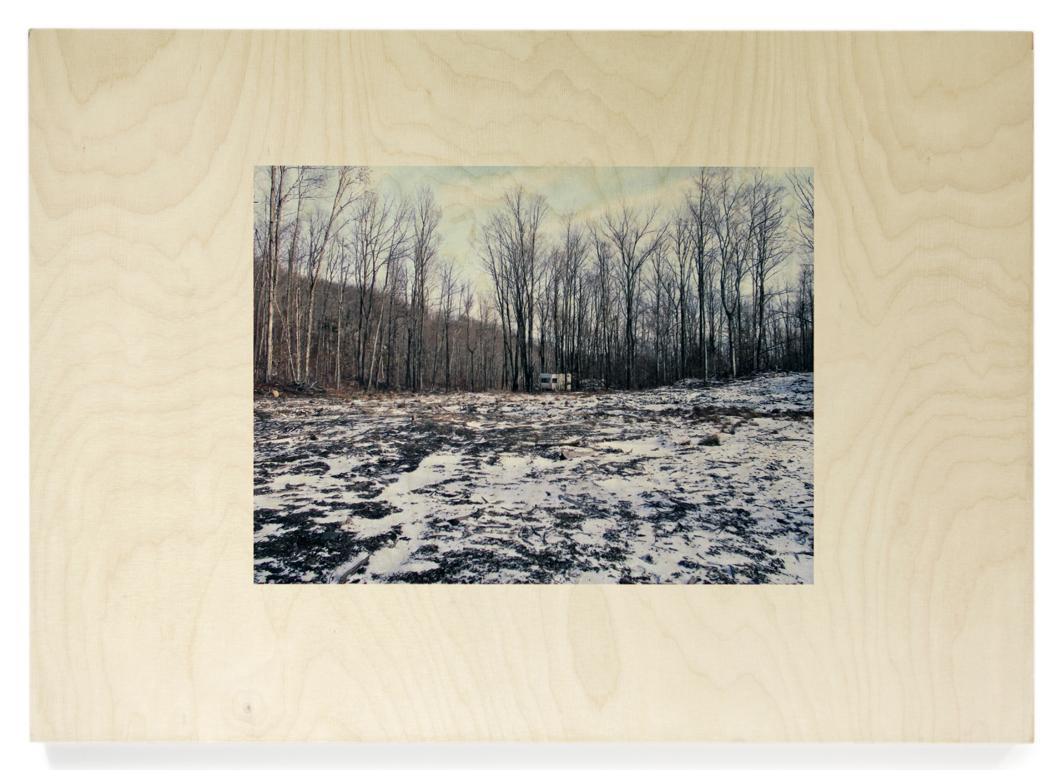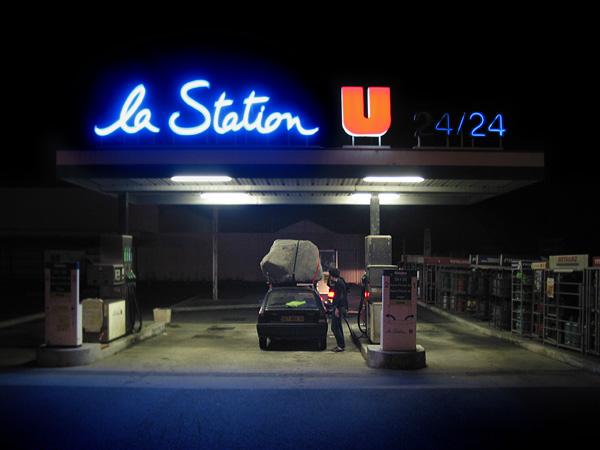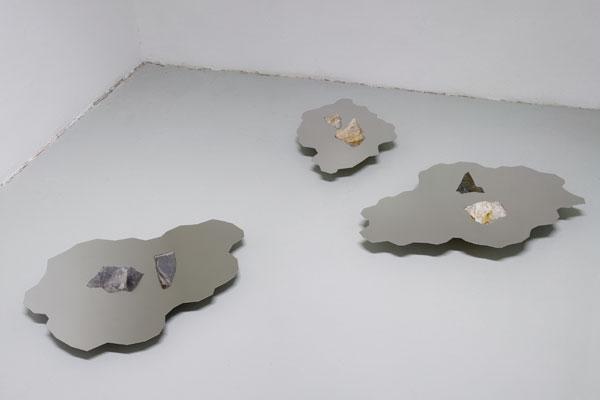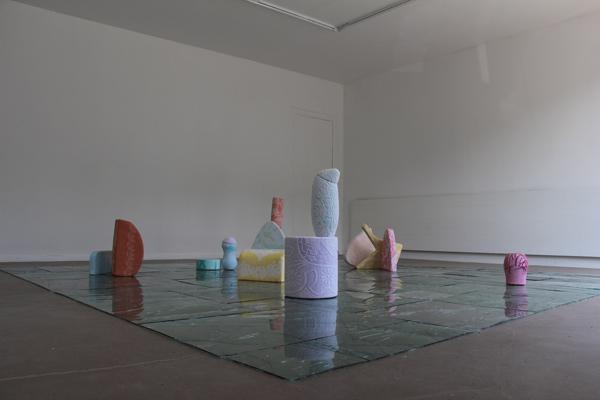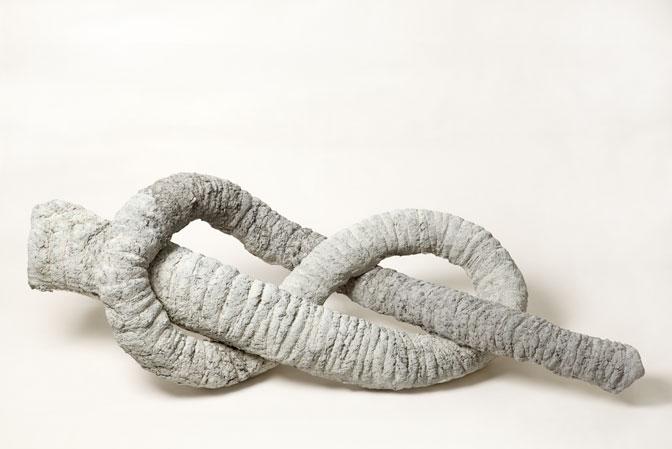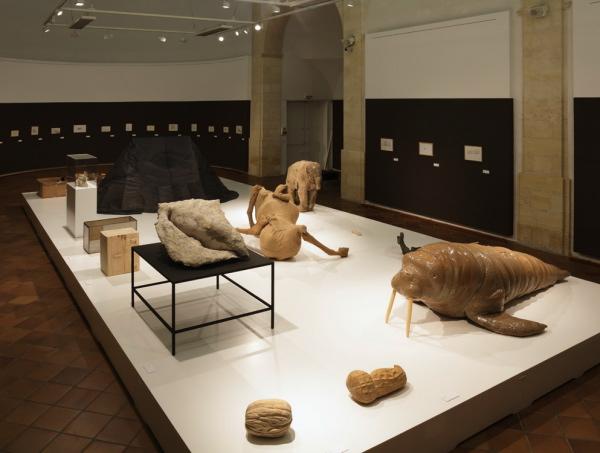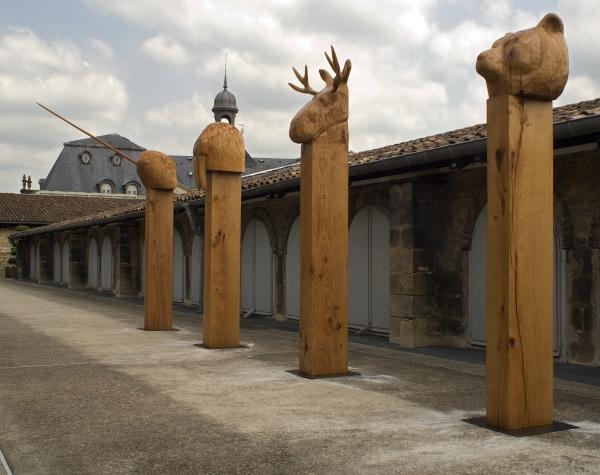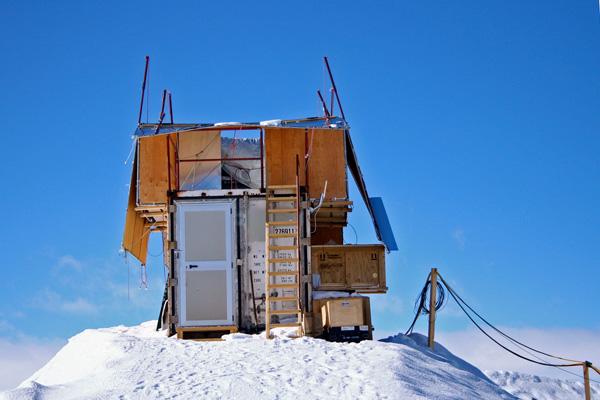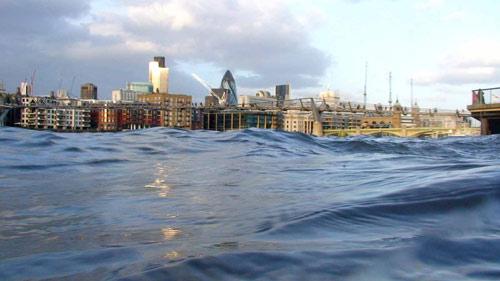Here and now
In the PACA, Brittany, Rhône-Alpes and Aquitaine regions, Documents d'Artistes acts as a reference platform for artists and a resource for professionals. It is thus possible to stay in touch with French art despite being at some remove, follow the developments of bodies of works, assisted by updates, and do away with distances by consulting their pages and dossiers as required. This availability, an intrinsic feature of the internet, now merges time that is instant and time that is experienced,1 endowing net-surfers with a dizzy-making gift of ubiquity and a frenzied hyper-mobility. The "here and now" is thus "refreshed" with every connection and every virtual displacement, relativizing the tenor of the viewpoint from the immobility of the computer screen and the continually renewed flow of data. Where exactly do we stand now? How are we to get our bearings when markers confuse one another and are being forever re-calculated? "Do this host of spaces and the existence of non-places not indicate the emergence of another "space"? A "space" whose style and nature might be those of physical places and space? As for time, do the disappearance of alternating rhythms, daytime and nighttime, and the upsurge of many different dyschronies underscored by certain urban theories not point to the appearance of another time, discontinuous and not arrowed, which is different from existential and experienced time?"2 asks Anolga Rodionoff. How, henceforth, is this mass to be managed, what are we to choose, and how are to regard this artistic godsend?
Rather than imagining a museum in the imaginary genealogy of Malraux recently examined by Georges Didi-Hubermann,3 let us imagine an environment, the ambience of a place that combines the work and its documentation, its "image-perception" and its "image-memory" to borrow Henri Bergson's concepts.4 Hitherto, attempts to hold de-materialized exhibitions, online or published, have formed a frustrating corpus, powerless to replace the experience of the work by anything other than a residual visual proxy. Constructing a landscape or an environment is already to make use of the very nature of the subject-medium: a composite viewpoint projected onto a territory framed by the onlooker's subjectivity. According to Jean-Louis Weissberg, "Instantaneousness is nit the predominant principle here, but one of the ways in which time exists, as much as progression, standstill or absence of time-related reference [...]. We no longer travel in these landscapes, it is they which travel thanks to us. The essence of the interactive circuit is the mobilization of the environment. We have become set-designing pointsmen, adjusting passing speeds and zooms, and selecting fields of vision. The journey acquired a new dimension, no longer in space but in the depth of reality which makes movements towards the spect-actor."5
So it is permitted to compose one's own landscape desire, but rather than looking for a naturalist realism perforce doomed to failure, with the strategy of the clue operating here like a shifter of sensations and memories, something fantasized freed from the link to place and time, the better to exist in the here-and-now of a deduced landscape. So it is by snippets that the navigation is constructed, among the bodies of works of different artists whose online documentation represents so many autonomous republics to be visited. By digging, at the mercy of connivances, acknowledgements and affinities, as well as discoveries, in favour of a seductive image functioning like an invitation or something deictic (thus clearly indicative), an odd environment is developed from totally subjective intuitions, with a climate, an ambience, more or less fantasy-like configurations, capable, unabetted, of sketching the outlines of an environment that is itself the stuff of appropriation. Above all, not delimiting, leaving the outlines unstable, free to incorporate excrescences through the wishes of the reader-surfer-spaceman/woman-onlooker-TV viewer. It no longer really has outlines, either, and this is why the landscape is the ideal place for a negotiation between it and me, and between them and it.
The weather (we have) and the time that is6
Because of the cult of presentism,7 eternity is no longer such a meaningful point of reference, and the whimsical marker formed by the generic term "time" is being constantly relativized. But even when de-materialized, our relation is just as sensitive, programmed as we are by changes of time and seasons.
So a post card from Olivier Millagou does not describe the weather (he is having), it sketches on the back, worked with dry point (carving the motif on the surface with a pen), a palm tree motif suggesting a paradisiac view beyond his absent back, devoid of seaside and climatic anecdotes (Scratch Postcards, 2012). The fact remains that this particular missive just as surely sets up a climatic ambience, because of the souvenir linked to the social and friendly exercise of writing holiday post cards. So even a virginal card still slightly concentrates the savour and weather of a place. Imbued with On Kawara's existential conceptualism, the epistolary game of I Was There (2005) illustrates the artist's wandering (or that of his messengers), cultivating in passing an old-fashioned method of communication in the age of broadband Internet. Like a little time cultivated to assure his presence in the world, Millagou also subjects his post cards to the sun, creating faded hues and tired vedute. Like "Miniatures" of an incongruous palm tree obtained by over-exposure, the cards pile up layers and times (Fade Postcard, 2007). And the Atomium in Brussels, or Alexanderplatz in Berlin bedeck themselves with a summer atmosphere, as incongruous as it is sexy, a "Hawaii effect" mixed with solar exposure, because Millagou is not afraid of explosive cocktails.
Johann Rivat has the same sense of visual pile-up in a quite different style. Focusing on painting, he produces landscapes under acid, like this architectural view combined with ghostly philodendron leaves in Monument #1 (2012) or a service station invaded by vegetation that is as luxuriant as it is ghostlike (Monument #3, 2012). In the middle of a watery expanse painted "Doig"-like, rises a post pointing to a KFC (Me and the Colonel, 2009), a visual collision worthy of a Google image search which always ends up with unlikely and transgender encounters. Johann Rivat is a young artist of his time who can as well combine in his reference list the libertarian writer Henry G. Thoreau and New Order, Félix Valloton and Ed Ruscha, and Joseph Beuys and Steven Shore. This particular eclecticism perfectly reflects the culture of this new generation for whom chronologies and memberships in movements no longer really make any sense. The "here and now" disconnects uses as much as it over-informs, as has been shown by the explosion in the 2000s of the uses of samples and open-sources offered by the Internet. Today's painting is a sign of this concertinaing between the paradoxically traditional time of its style and its ubiquity.
Take-out Landscape
There are many studies reminding us of the anti-naturalism of the landscape, its cultural framing, a view of the mind affixed to a territory. As an object of the gaze and a surface of projection, the landscape does not in itself exist, it is formed by combining the experience of the outside with the living memory of the beholder.
Boris Chouvellon is a gleaner of landscapes and landscape signs which he shifts from their original surroundings to exhibition rooms. So a fibre-cement swimming pool, of the sort which hallmark peri-urban zones like postmodern totems, is reproduced, erected like a solemn ruin in an exhibition venue or a park (Détournement de fonds/Embezzlement of Funds, 2011). Chouvellon likes nothing better than "frontier spaces", those which delimit the town or the shore, circumscribing ever more obsolete hierarchies. He transports these social and architectural markers from a zone to a non-place, that of the white cube, which is decisive despite its generic features. Latterly, in a collaboration with an Italian marble quarry, Chouvellon has modelled a strange microcosm: a large miniature wheel (first paradox) set in a fossil landscape of marble. A strange place for this encounter, visual puzzle and ode to dereliction re-enacted in the form of an occasional table (Sans titre/Untitled, 2013), like a colony set up on perfectly polished plaques, this time around. The landscape is carried away and veers from its prerogatives, endlessly re-enacting the place of the observer, and forever unframing his expectations.
Julie Fortier also carries off landscapes. She imports those of her native Quebec in videos and writings such as Mémoire durable/Sustainable memory, a photographic recording started in 2006 of the clear cutting of a forest near her parents' home, where she records the re-growth with a single photo taken each year. Somewhere between objective method and sentimental procedure, Julie Fortier reconstructs an environment, pasting her images on planks, a parceled and clue-like diary which disconcerts the conceptual methods of drastic recording. Added here to the regularity is a tangible loss, of information and liaison alike. With the same sensibility, she films the dismantling and migration of a demonstration home, distant degeneration of the pioneer past of her continent which forced people to move on as the land was gradually depleted. In her wanderings, Julie Fortier lugs a large rock onto the roof of a modest little car. "You just haven't managed to make the most of the summer, have you!" is a weird visual charade, a funny ode to landscape transport.
We find something similar with Pierre Malphettes, in the way he composes landscape situations, shifters of places, between memories and projections. Whether he involves video, installation or sculpture, his works often "embark" us on stories and strolls. Whether he limits himself to clue-like forms (spring, rock, tree stump, pile of sand, window) or develops a climatic ambience or a generic landscape. Une flaque/A Puddle (l'Estaque) is incidentally part of this recent logic. It is part of a series of several polished stainless steel sculptures, studded with stones gleaned during walks, as if set in the middle of a reflecting case. If this particular puddle bears the name of L'Estaque, a seaside neighbourhood of Marseille, celebrated by painters at the turn of the 20th century (Braque and, before him, Cézanne), for Malphettes it is not really a matter, here, of appropriating a prestigious genealogy. It is more the question of the site and the non-site, as raised by the American (land artist) Robert Smithson, in 1969, when he moved mirrors in the landscape and brought back piles of stones into the exhibition spaces which are being referred to here. A puddle would indeed be part of this landslide, from a geographical situation to a transposition into sculpture, a little piece of L'Estaque in a puddle, itself taken into a museum. So it is, incidentally, with the sites in the Corbières, Crozon and Rayole, now themselves endowed with a puddle with two or three stones. In this transference the time factor is thus crucial, bringing this enigmatic and, at first glance, cold association to the poetry of a walk, two experiences condensed on this delicate reflecting surface; a little piece of landscape, an afternoon snippet, a tenuous but devilishly efficient impression for transporting anyone who plunges his gaze therein. Around such more situated sculptures there develops a generic character peculiar to Pierre Malphettes, a matter of preserving their porousness in the onlooker's experience and keeping a poetry close to parable. Surprisingly, in historian Simon Schama's book, Landscape and Memory (1999), one chapter is titled "Wood, Water, Rock. New Landscape Artists for Arcadia". In it the author examines a whole landscape tradition, in particular compositions by Lorrain and Poussin: "There have always been two Arcadias: the hirsute and the smooth, the dark and the light, the sojourn of bucolic leisure, the domain of primitive panic." Malphettes could also be an Arcadian, in all his duality.
Global Village
The comparison has often been made between the Internet and the notion of the global village, which Marshall McLuhan wrote about in The Medium is the Message in 1967. The dissolution of borders, outlines and consequently territory has not prevented the emergence of communities. Even de-materialized, they remind us of the gregarious human reflex. Nicolas Momein arranges signs like the totems of a secret community, in a coded sculptural language that combines minimalist grammar and vernacular vocabulary. His works, which are deliciously coloured by bathroom towels with outdated patterns, like the ones he uses for his strange Naphtaline Objects (2013), trigger a sense of belonging to a thoroughly incongruous ill-defined group, where the forms are detached from all affect.
For some ten years now, Laurent Le Deunff, who is more physical, has been developing his own archaeology, vestiges of an animist community whose sculptures are as if fossilized , borrowing the roughness and shape of an elephant's trunk (Noeud de trompe/Trunk Know 1, 2012), or the erectile structure of a conch (Coquillage/Shell 4, 2012). La grande évolution/The Great Evolution (2012) offered, it so happens, a bestiary like in a natural history museum, white podium magnifying walrus, walnut and peanut shells, an almost mummified elephant calf, a caravan of moving strangeness joining immemorial times and vision of the future. The manufactured dimension of Le Deunff's sculptures takes us into a prehistoric time heightened by a grizzly bear, an eland, a walrus and a narwhal, which the sculptor carves in wood. On the roof of the CAPC their heads displayed as if on monumental containers of PEZ sweets have become Totems (2007) signs of a belief and a know-how around which is created a community of amateurs, signs of a rallying power.
Catherine Rannou, for her part, tends to set out in the footsteps of explorers, but this is just another question of time. She temporarily colonizes places where she sets up experimental shelters, the fruit of her architectural training. "I try to exhaust a place, to capture the elements which make a space gradually inhabited, occupied by a person, a family, a community." Rannou crisscrosses, records and provides nomenclature and parameters for her environment, the better to install herself in it. From it she brings back films and data, and she carries on building, ceaselessly questioning the sense of belonging.
This is a bit what is produced, in the end, by the aquatic videos of Marcel Dinahet, installed off-shore, a good way from land, between two waters, observer of a drifting terra firma. London thus takes on a whole other dimension, filmed from the opaque waters of the Thames, shipyards become rusty ruins, and a spring with crystal clear water shows its fragility. Dinahet films from a recess in the territory, a moving, as if liberated zone, which opens the eyes onto an elaborate environment. Observed from the limbo of the Internet, from this quintessence of the off-shore, Marcel Dinahet's shores are observed as if they belong to a bygone time.
"So contemporaneousness is a special relation with its own time, to which one clings while keeping one's distance. [...] Those who overlap too fully with the period, who perfectly agree with it on all points, are not contemporaries because, for these very reasons, they do not manage to see it. They cannot fix the gaze which they cast on it."8 In the footsteps of Giorgio Agamben, these artists create a remove, accompanying the wanderings of their spectators and followers, and the increased number of their viewpoints in this "here and now" which maintains the paradox of its obsolescence and its vitality.
Bénédicte Ramade
Translated by Simon Pleasance
Notes :
1 - Anolga Rodionoff, Les territoires saisis par le virtuel, Rennes, Presses Universitaires de Rennes, 2012.
2 - Id. , ibid. , p.11.
3 - Georges Didi-Hubermann, L'album de l'art à l'époque du "Musée imaginaire", Paris, Editions Hazan, Musée du Louvre, 2013.
4 - Henri Bergson, Matière et mémoire, Paris, PUF, 1985.
5 - "Sous les vagues la plage", Paysages virtuels, Paris, Dis voir, 1998, p.24.
6 - I am borrowing this formula from Anne Cauquelin in her introduction to Fréquenter les incorporels, Contribution à une théorie de l'art contemporain, Paris, PUF, 2006.
7 - François Hartog, Régimes d'historicité. Présentisme et expériences du temps, Paris, Le Seuil, 2002.
8 - Giorgio Agamben, Qu'est ce que le contemporain ?, Paris, Payot-Rivages, 2008.
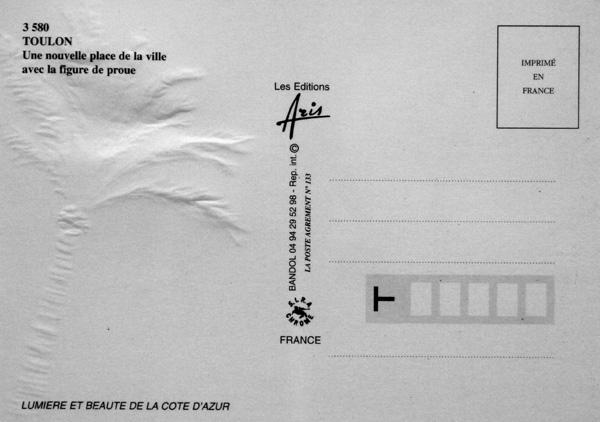
Courtesy SULTANA, Paris.

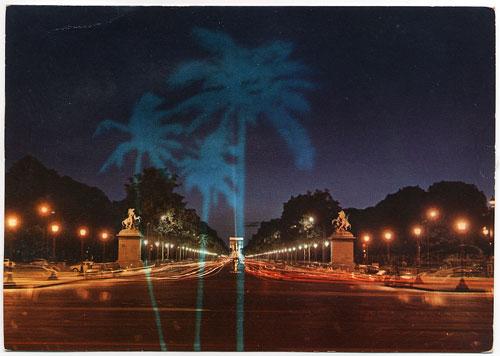
Courtesy SULTANA, Paris.
